KC COLUMN: Fresh Big Red Cheese
by KC Carlson
I haven’t talked about new comics much lately, and especially not about any current DC projects, because I haven’t enjoyed many, and I was brought up on the old homily “If you haven’t got anything nice to say… “ Well, you know the rest.
I finally found a DC something that I’m really enjoying. It’s the new Shazam! series by Geoff Johns and Gary Frank that’s currently the back-up feature in Justice League. I believe it’s about the 537th time that this series has been revived (give or take) since its Golden Age success as the most whimsical superhero series ever. Actually, it’s the new Captain Marvel series, but DC can’t trademark that name (for obvious reasons), so we’re stuck with calling it Shazam!. That’s both the cantankerous old wizard who gives young Billy Batson his super powers by pulling a Beyoncé and telling Billy to “say my name”. And it’s also the magic word which turns adolescent Billy into the physically adult Captain Whatshisname (not his real name), giving him lots of superpowers — maybe even more than Superman.
THE PAST IMPACTS THE FUTURE
Reading the original Golden Age adventures of the Captain Marvel Family (there were billions of them! — including talking animals) was not unlike reading fairy tales for 36 hours straight while simultaneously eating endless cotton candy. This is not exactly a put-down, as the original series is still one of the most beloved superhero series of all-time.
It was also one of the most popular and best-selling of its era, frequently outselling the not quite as juvenile (but close) Superman series. In fact, the way that DC chose to deal with that particular competition was to take Fawcett Publishing to court for copyright infringement. That eventually wore down Fawcett to the point that settling the case was cheaper than actually publishing the comic books. Ironically, after Captain Marvel was gone, the Superman books under editor Mort Weisinger (especially spin-off titles starring Jimmy Olsen and Lois Lane) were even more silly than Captain Marvel ever was.
Many of the Captain Marvel stories were drawn by an artist named C.C. Beck, who chose to draw in a much more whimsical style compared to the more realistic style used for other superhero comic series. It was a good choice, as most of the Captain Marvel scripts (many by Otto Binder) called for whimsical at their core. As an example, instead of an inspiring nickname like “the Man of Steel”, Cap was tagged “the Big Red Cheese”.
After he retired from actively drawing comics, Beck started writing about them, mostly in a column in The Comics Journal called “The Crusty Curmudgeon”. He often dealt with what he felt was the inappropriateness of increasingly realistic art styles for superhero series. One of his regular targets was DC’s use of more realistic artists on subsequent Captain Marvel series (after Beck left the original Shazam! revival series over plotting concerns).
That left DC with a huge problem. Captain Marvel, as originally conceived mostly for kids, would not translate well after the passage of time had turned the comic book market into a venue for long-time comic book fans, who wanted to see increasing sophistication in their comic stories, art, and characters. Since the Big Red Cheese was SO identified with a more cartoony look and whimsical attitude, translating him to modern times became a difficult proposition, especially since DC was already making money on reprints of the original stories, which were so long out-of-print that a whole new generation of readers were just meeting these characters for the first time.
Talk about your thankless jobs. Somehow any new Shazam! series was going to have to skirt the fine line between nostalgic whimsy and cutting-edge modern storytelling and art. A lot of very talented creators tried — and failed. Some efforts never even got past the preliminary stage.
THE ORDSTER TO THE RESCUE
Probably the closest to combining the two wildly divergent goals for revival was Jerry Ordway’s 1994 The Power of Shazam! graphic novel and follow-up series (48 issues plus an Annual). Ordway both wrote and drew the graphic novel, but when the series started, Peter Krause and Mike Manley were the primary artists. Ordway continued writing as well as providing painted covers and occasional interior art. Both graphic novel and series achieved a good balance between nostalgia for the lightness of the original series and modern sophisticated storytelling, but sales of the series steadily declined, as comic fans of the era were drawn to more dark material. The series ended in 1999.
One of the difficulties in presenting Captain Marvel comes when he and his cohorts are considered part of the DCU. Originally, he had his own universe, where his blend of old-fashioned goodheartedness and excessive power functioned on its own. In a world populated with all kinds of other superheroes, it’s more difficult to tell his stories without running into clashes of tone and personality. In Power of Shazam!, this problem was dealt with by setting him in Fawcett City, which had an “out of time” feel and the approach of the 1950s, although this approach was phased out over the series run.
Much later, in 2007, Bone creator Jeff Smith tried his own unique take on the property in Shazam!: The Monster Society of Evil. Originally published as a four-part miniseries, it’s now better known as a graphic novel. Smith tackled the universe contrast problem by creating a story that obviously doesn’t take place in ongoing DC continuity.
The Captain Marvel who was appearing in DC continuity at the time was probably having a worse time, as Cap kept bouncing from Event to Event without much rhyme or reason. One of Cap’s foes, Black Adam, was getting much more play in the DCU than Cap was, probably because fans thought he was much more “badass” than the original character. When Mary Marvel turned pure evil in Countdown, many fans thought that something was rotten in Fawcett City and abandoned the Marvel Family characters for good.
FRESH START
The new Johns/Frank series sweeps all of that away, in one of the few Post-New 52 changeovers that seems like a positive move. Not that everything is peaches and cream. Things are looking pretty bleak for Billy Batson, a seemingly sweet teenager who keeps getting bounced around from one set of foster parents to another. There’s a good reason for this, and one that sets the story apart in a very dramatic way from any previous Shazam! series. It unfortunately also makes the series hard to talk about without giving too much away.
Johns is taking his time getting to the point. So far there have been six back-up chapters of the series (Justice League #7,8-11, 14) plus a full-issue story in Justice League #0. Billy is just now meeting the wizard and getting his powers (in the full-length #0 issue, which came out after JL #12.) Both Dr. Sivana and Black Adam have been introduced with all-new motivations and drives. Both Mary and Freddy are part of Billy’s new foster family, as well as three other kids: Pedro — whom we don’t know very well yet, Eugene — a geek, and Darla — a very young and energetic girl. Mary seems to have a personality similar to the old Mary, although much more observant. She has a pet rabbit named Hoppy. Freddy is now a blond and a scam artist, but still crippled. After Billy turns into the so-far-unnamed adult hero, Freddy is the first to find out (because Billy tells him). Billy also has a mysterious relationship with a tiger at the local Philadelphia Zoo, whom he calls Tawny.
Gary Frank’s art is perfect for these characters and extremely complimentary to Johns’ scripts. Frank excels at drawing people and expressions (including body language) that makes Johns’ characters come alive. He’s also been extremely adept at keeping the so-far unnamed Captain Marvel-like character mysterious, designing a new costume for him which includes a hooded cape, yet retains many classic elements.
After a long stint at Marvel, Frank became exclusive at DC, working on several Superman projects. He excelled at Superman: Secret Origin, as well as the recent Batman: Earth One. I think Shazam! may be another career defining work-in-progress.
For now, Shazam! remains the back-up feature in Justice League, DC’s best-selling monthly. Which means that it’s already got a lot of eyeballs on every chapter. Obviously, the storyline will eventually be collected, and that will be a must-have for any bookshelf.
________________________________
KC CARLSON: Wonders if Gomer Pyle was the super-powered version of Jim Nabors. If you don’t get this joke — yes, I am old.
Classic comic covers from the Grand Comics Database.

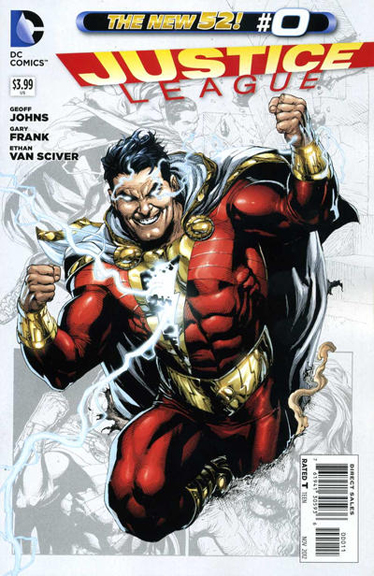
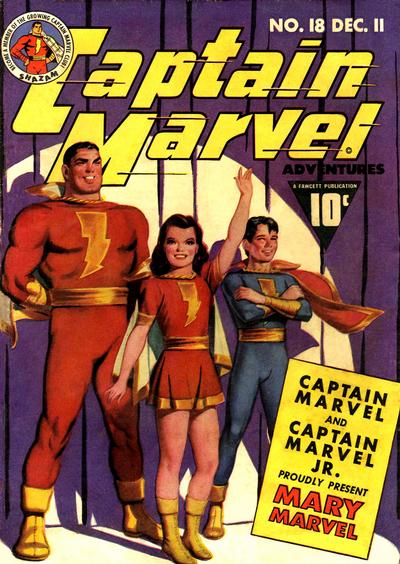

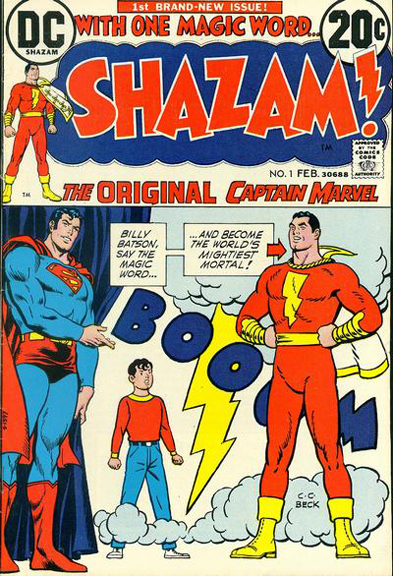
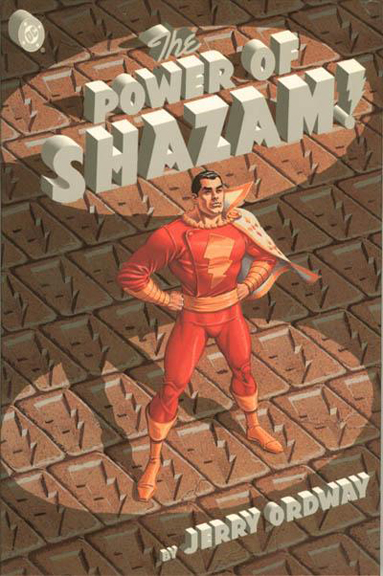
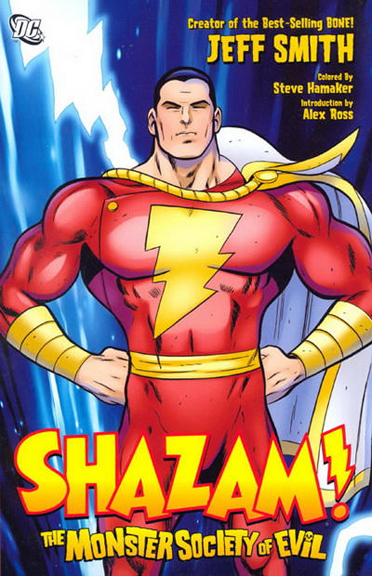
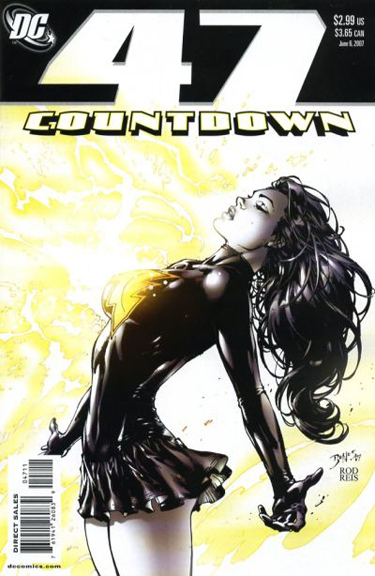
USER COMMENTS
We'd love to hear from you, feel free to add to the discussion!